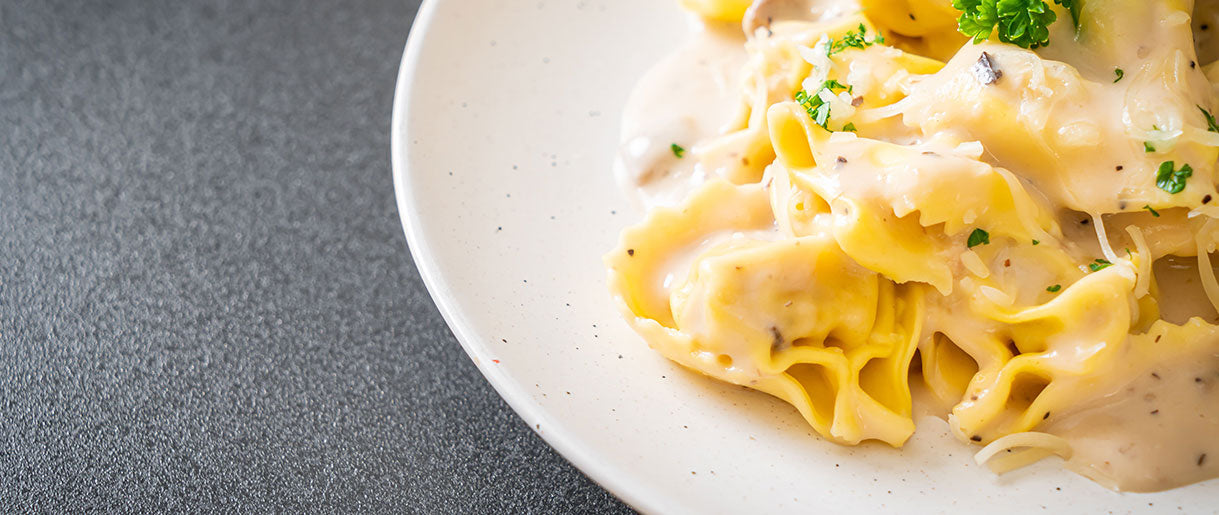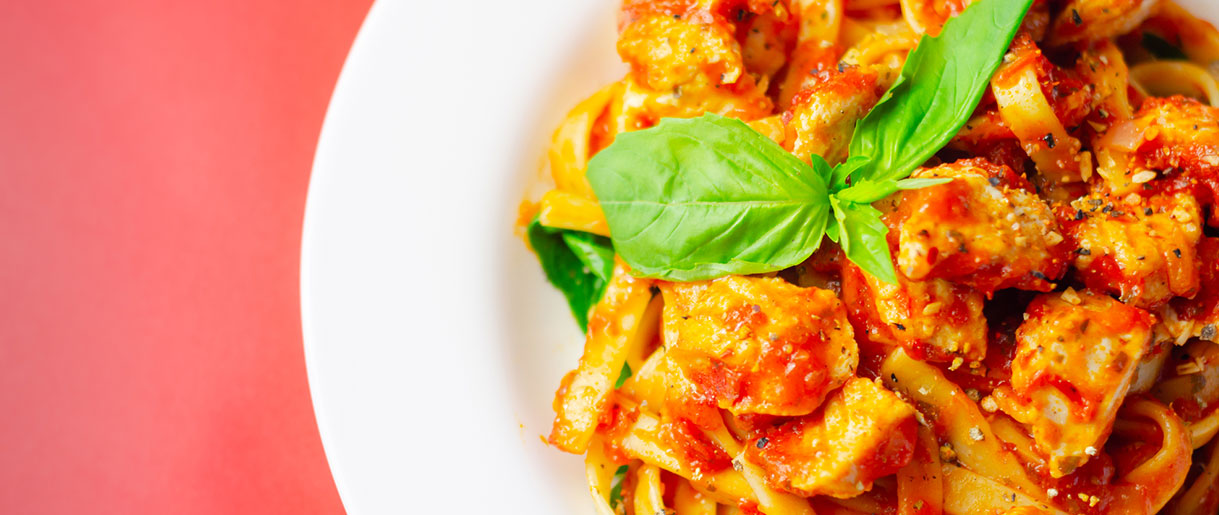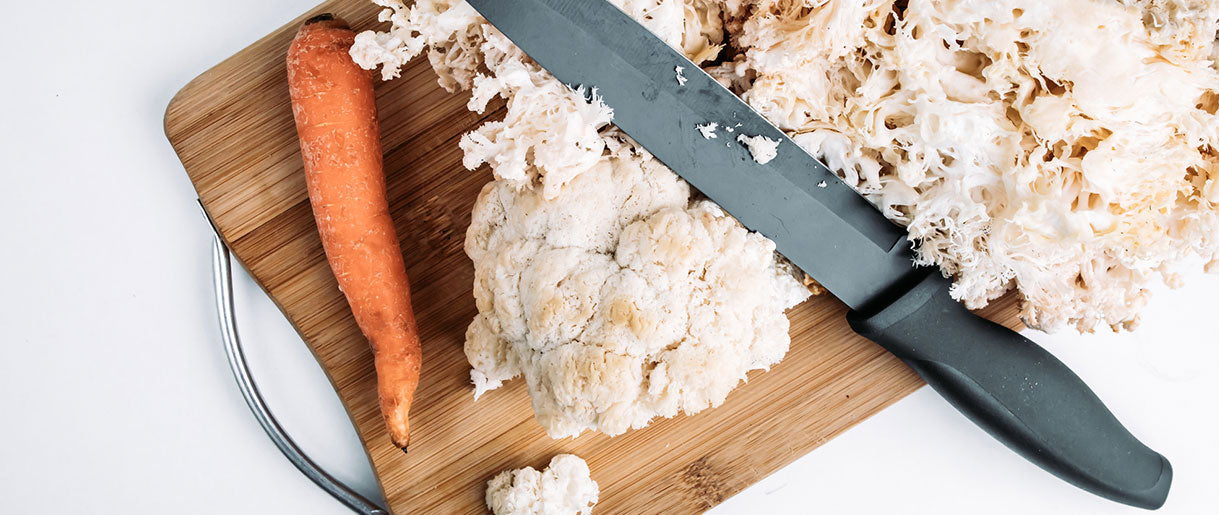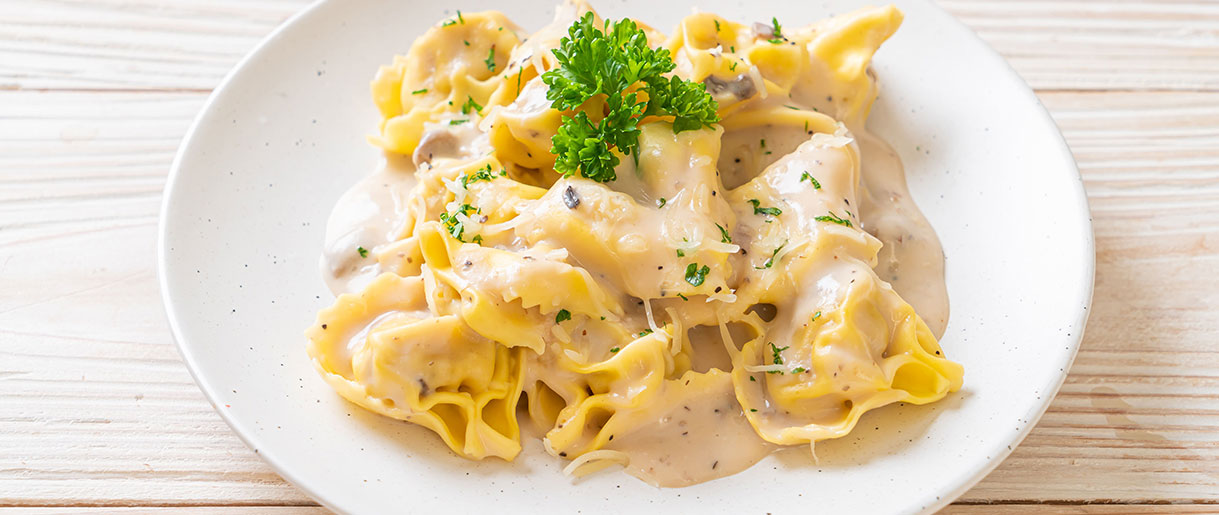Are you seeking a delicious and nutritious Lion's mane mushroom pasta recipe? Try this simple yet flavorful dish that combines the earthy, unique taste of Lion's mane mushrooms with your choice of pasta. First, sauté the mushrooms with aromatic vegetables and herbs, then simmer them in a light sauce before tossing them with perfectly cooked al dente pasta.
This versatile dish can be customized to suit various dietary preferences and is perfect for a cozy dinner or an elegant meal. The Lion's mane mushroom pasta recipe is the ideal vegetarian alternative to seafood pasta due to its lobster-like flavor. This delectable flavor provides a crunchy texture that will surely please your taste buds.
It's a hit at any dinner gathering since it's creamy without overpowering. Moreover, you get to enjoy the health benefits of Lion's Mane, including its ability to boost cognitive function, enhance gut health, boost immunity, improve your mood, and fight brain fog.
Discover our Lion's Mane mushroom recipe pasta below. Then, follow the step-by-step recipe to create a memorable and satisfying dish that showcases the wonderful flavors and health benefits of Lion's mane mushrooms.
A Step-By-Step Lions Mane Mushroom Pasta Recipe
Lion's Mane is an excellent add-on to any pasta dish that is vegan or vegetarian. In all Lion's mane mushroom recipes, this interesting fungus gives a meal that would otherwise be high in carbohydrates the much-needed extra protein.
Moreover, Lion's mane mushroom taste completes pasta dishes, with these fresh mushrooms replacing crab and lobster while satisfying your taste buds. Undoubtedly, a tasty way to include the mushroom and its benefits in your diet is with this Lion's mane recipe, a vegetarian seafood pasta alternative.
General Information
Serves: 2
Nutritional information: 750 calories per serving
Prep time: 15 minutes
Cook time: 20 minutes
Ingredients
- 2 tablespoons of butter, extra virgin olive oil, or vegan butter
- 1 tablespoon of vegetable oil
- 1 medium yellow onion (finely diced)
- 1 tablespoon of tomato paste
- 10 ounces of tomatoes (fresh and cubed or pre-made tomato sauce)
- ½ pound of Lion's mane mushroom
- 1-2 cloves of minced garlic
- ½ cup of vegetable broth
- 2 cups of uncooked pasta of your choice
- ½ tablespoon of smoked paprika
- ½ teaspoon of Italian seasoning
- 2 tablespoons of chopped fresh parsley
- Salt and pepper to taste
Optional Ingredients:
- ½ teaspoon of chili powder or 1 minced chili pepper
- ½ cup of heavy cream, coconut milk, or vegan cream cheese
- 1 ounce of parmesan cheese
- Asiago cheese
- Serrano pepper to taste
- Cayenne pepper to taste
Instructions:
1. Prep Your Mushrooms
It would help if you prepared your Lion's mane mushrooms before cooking them. To remove any extra dirt, rinse them in water or brush them with a mushroom brush. If you rinse them, let them dry for a few hours, ideally in the sun, so the excess water evaporates, and the mushrooms regain their natural properties.
The mushroom's bottom is probably soiled and rough to the touch. You should remove that section as well as any other spots that are discolored or unclean.
2. Prepare Your Seasonings
Turn your stovetop to medium-high heat and add a tablespoon of vegetable oil to a saucepan. Add the onions to the pan once the oil has warmed up, then reduce the heat to low to medium. Cook the onion until transparent, stirring periodically. Cook pasta as directed on the package in the meanwhile.
Add the garlic and continue cooking it once the onions are transparent and aromatic (about a minute). Then, add salt, pepper, smoked paprika, Italian spice, and vegetable broth to the pot, along with the tomato paste, tomatoes, and chili pepper.
Stir, cover, and simmer on low to medium heat for 5 to 10 minutes. To make your pasta sauce creamy, add the heavy cream when the liquid has simmered down (skip this step if you're a vegan) and blend with an immersion blender until smooth.
3. Fry Lion's Mane Mushrooms
Melt the butter in a skillet over medium heat. A vegan substitute might be vegan butter or vegan olive oil. Lion's mane mushroom should be cut into small pieces and fried in a skillet (3-5 minutes). To the sauce, add the cooked Lion's Mane.
4. Stir Your Lion's Mane Pasta In Sauce And Enjoy
When your pasta is al dente, drain and stir it into the sauce. Grated parmesan cheese and freshly ground black pepper grinds are optional additions. Stir everything together over low heat. Plate right away after adding fresh parsley as a garnish.
Additional Tips For Cooking Lion's Mane Pasta

The best pasta varieties are those that are long. Tagliatelle, linguini, bucatini, and spaghetti are all excellent choices. Of course, the easiest option is spaghetti, but bucatini best holds the creamy sauce.
Don't worry about obtaining a specific type of pasta; dried or fresh pasta will work. If you'd like, you may even make your pasta from scratch.
When making the sauce for this recipe, you can use a food processor or Ninja blender instead if you don't have an immersion blender. However, ensuring the sauce has cooled down is crucial to avoid splattering when unscrewing the blade from the cup.
To adjust the spiciness level, you can omit the Serrano and cayenne pepper for a milder flavor or add an extra sliced Serrano pepper for an extra kick before serving the pasta. Additionally, you can sprinkle Asiago cheese on the pasta instead of parmesan cheese.
Lion's Mane Mushrooms are high up on tree trunks and branches if you decide to go foraging for them. Lion's Mane is an excellent option for beginners since they do not have dangerous look-alikes.
Read More: Learn about Lion's mane look-alikes.
Serving Suggestions For Lion's Mane Mushroom Pasta

Presentation And Garnishing Ideas
You can add a few garnishing touches to make your Lion's mane mushroom pasta even more visually appealing. First, drizzle a small amount of olive oil over the cooked pasta just before serving to give it a shiny and delicious look.
Sprinkle a mix of garlic powder and onion powder on top of the dish for an extra burst of flavor. Next, place a few sautéed Lion's mane mushrooms on top for a gourmet touch. Finally, garnish your Lion's Mane mushroom pasta with fresh herbs, such as parsley or basil, to enhance its visual appeal and taste.
Pairing With Sides Or Salads
This Lion's Mane mushroom pasta recipe can be easily paired with various side dishes to create a balanced and satisfying meal. For a refreshing side, serve your mushroom pasta, a simple green salad, and a light vinaigrette dressing.
Add sliced tomatoes or grilled vegetables for a more substantial and colorful side dish. Incorporating sides with different textures and flavors will complement the earthy taste of Lion's mane mushrooms and turn your pasta into a delightful, tasty dish.
Wine Pairing Recommendations
Consider pairing your meal with a suitable wine to elevate your dining experience with this Lion's Mane mushroom pasta. Since the dish features Lion's mane mushrooms' distinct, earthy flavor, a medium-bodied white wine, such as a Chardonnay or a Sauvignon Blanc, would be an excellent choice.
These wines have enough acidity and flavor to balance the richness of the mushroom pasta without overpowering it. Alternatively, a light-bodied red wine, like a Pinot Noir, could also work well with this Lion's mane mushroom recipe.
Variations and Substitutions When Cooking Mushroom Pasta

Alternative Protein Sources
While the Lion's Mane mushroom pasta recipe already offers essential nutrients, you can easily incorporate additional protein sources to make it even more filling. For example, grilled chicken, shrimp, or tofu can be added to the dish for a protein boost.
Cook your choice of protein separately and mix it with the pasta and sauce before serving. For a more decadent version, consider adding crumbled Italian sausage or pancetta. Adding alternative protein sources is a great way to diversify the flavors of your Lion's Mane mushroom pasta and cater to different dietary preferences.
Vegan And Dairy-Free Options
If you're looking to make your Lion's Mane mushroom pasta recipe vegan or dairy-free, there are several substitutions you can make. First, replace any butter in the recipe with olive oil or a vegan substitute. To mimic the creaminess of pour cream, use a plant-based alternative like coconut cream or cashew cream.
Most grocery stores carry a variety of vegan cream substitutes that can be used in place of dairy-based pour cream. You can also swap out any cheese, such as shaved Asiago cheese, with a vegan cheese alternative or nutritional yeast for a similar taste and texture.
Additional Vegetables Or Herbs
There are countless ways to customize your Lion's Mane mushroom pasta recipe by adding extra vegetables or herbs. For a burst of color and freshness, toss in some cherry tomatoes or blanched asparagus. You can also incorporate leafy greens like spinach or kale, which will wilt down and blend seamlessly with the pasta and sauce.
For an extra layer of flavor, experiment with different herbs like rosemary, thyme, or sage. These simple additions not only enhance the overall taste of your dish but also provide added nutrients, making it even more enjoyable to eat Lion's mane mushrooms.
Health Benefits Of Cooking With Lion's Mane

Incorporating Lion's Mane Mushrooms into this dish is an excellent method to imitate the taste and texture of expensive seafood, such as lobster and crab meat, using these seafood-flavored mushrooms.
Moreover, Lion's mane mushrooms offer health benefits beyond their delicious taste, from gut to brain health. This is because they contain all essential amino acids and bioactive compounds that protect neurons and nerves from damage.
They can boost nerve growth factor synthesis and improve brain health, including memory, cognitive function, and emotion control. You can take Lion's mane extract as a supplement—for example, mushroom powder—to tap into these benefits.
Boost Your Brain Health With Our 100% Organic Lion's Mane Powder - Claim Your 10% Discount Now!
Key Takeaways
Lion's mane mushroom pasta is an excellent substitute for seafood pasta since it is a meatless meal that maintains the crab and lobster-like taste. The flavor of Lion's Mane is similar to seafood, making it simple to switch to a vegetarian diet. In addition, regularly consuming Lion's mane pasta will guarantee improved brain health, enhanced immunity, and improved digestion and gut health.
Purchase some fresh Lion's mane the next time you see it so you can try this recipe. However, if you have time to go into the forest foraging, take someone knowledgeable enough to avoid getting look-alikes. You can play around with the ingredients to achieve a taste that appeals to you and your family.
Have you eaten pasta before? What are some interesting ingredients you added to boost taste and health benefits? Please share with us in the comments.










Let Us Know Your Comments